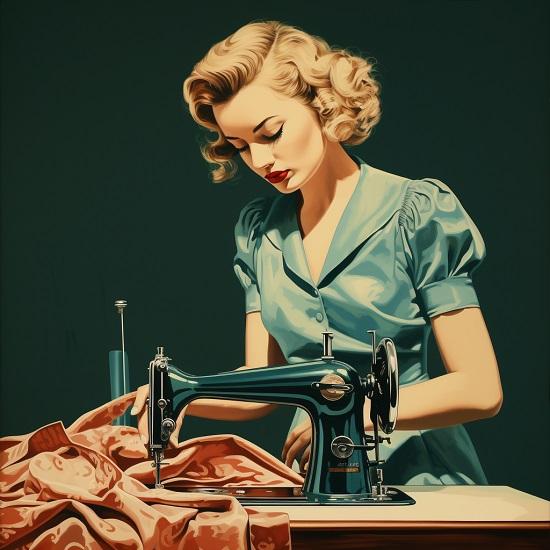Sewing is a captivating and fulfilling pastime, yet it’s crucial to place safety at the forefront of this craft. Regardless of whether you’re a novice or a seasoned sewing enthusiast, grasping and applying safety measures is fundamental for a seamless and secure sewing adventure. This detailed guide will explore vital safety tips for beginners, addressing a broad spectrum of elements to guarantee a safe and pleasurable sewing experience.
Embarking on Your Journey
1. Embrace a Gentle Start
When you’re starting with a new sewing machine or serger, it’s vital to begin at a leisurely pace. This approach allows you to acquaint yourself with the equipment, reducing the likelihood of mishaps. A slow start also provides an opportunity to confirm that the machine is threaded accurately, the tension is appropriate, and the stitches are forming as they should.
2. Mastery of Tools
The importance of using the correct tools and machines for safe sewing cannot be overstated. Always ensure that you have a thorough understanding of the equipment and tools you’re using. If you encounter something unfamiliar, seek adequate training before moving forward. Misusing a tool or creating an unsafe environment can result in accidents.
3. General Safety Measures
- Personal Accountability: Your safety is in your hands. Always adhere to the correct procedures and avoid taking shortcuts.
- Cleanliness and Organization: Maintain a tidy and well-arranged workspace to minimize potential hazards.
- Alertness: Stay aware of your surroundings and be proactive in spotting and addressing safety issues.
- Seek Assistance: If in doubt, always consult your supervisor or manager for instructions, guidance, or training.
4. Fundamental Safety Guidelines
- Dress Appropriately: Make sure your work attire fits well and doesn’t have anything that could get caught in machinery.
- Use Suitable Tools: Always use the right tools for the task at hand to prevent accidents and injuries.
Safety Tips for Sewing
1. Managing Cutting Tools
- Rotary Cutter Safety: Rotary cutters are indispensable in sewing but can pose a risk if not used correctly. Always adhere to the manufacturer’s instructions for using and changing blades, and keep the cutter closed when it’s not in use.
2. Safety with Sewing Machines
- Threading and Tension: Thread the sewing machine correctly and adjust the tension to avoid thread jams and needle breakage.
- Needle Handling: When changing needles, make sure the machine is off, and handle the needles carefully to prevent accidental pricks or injuries.
3. Safety with Irons and Presses
- Heat Control: Exercise caution when handling hot irons and steam presses to prevent burns. Always place the iron on a heat-resistant surface when it’s not in use.
4. Safety with Needles and Pins
- Needle Disposal: Discard used needles and bent pins in a secure container to avoid accidental pricks.
- Pin Management: Be careful about where you place pins and use a pin cushion or magnetic holder to keep them safe when not in use.
Ensuring a Safe Workspace
Beyond specific sewing safety tips, it’s crucial to maintain a safe overall work environment. This includes adhering to general workplace safety practices, such as:
- Adequate Lighting: Sufficient lighting is crucial for clear visibility while sewing, helping to prevent eye strain and accidents.
- Ergonomic Arrangement: Set up your sewing area in a way that encourages good posture and reduces strain on your body during extended sewing sessions.
- Fire Safety: Keep a fire extinguisher and smoke alarms in your sewing area, and be mindful of flammable materials like fabric scraps and lint.
Incident Reporting and First Aid
Finally, it’s important to stress the need for reporting accidents, faulty equipment, and unsafe conditions. Also, immediate first aid is essential for any injuries, no matter how minor they may appear. Ignoring an injury can lead to severe complications, so immediate attention is crucial.
Wrapping Up
In summary, safety tips for beginner sewists cover a broad array of precautions to ensure a secure and enjoyable sewing experience. By adopting these safety measures and being aware of potential hazards, sewists can cultivate a safe and productive environment. Whether dealing with cutting tools, sewing machines, irons, or pins, prioritizing safety is the cornerstone of a positive sewing journey. Remember, safety should always be the first consideration in every sewing endeavor.










